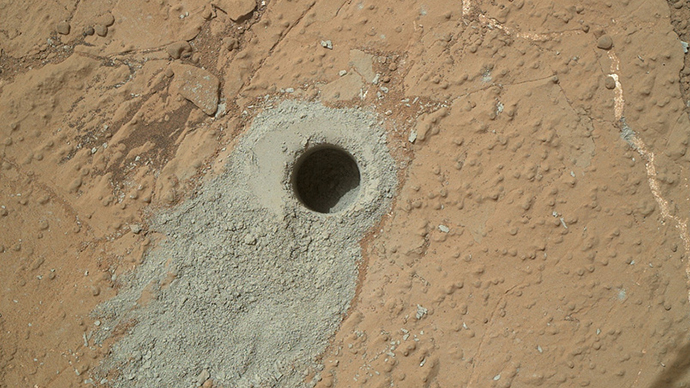Life on Mars more likely? Curiosity discovers methane, other organic chemicals

The Curiosity rover has found traces of methane and other chemicals on Mars marking the first “definitive detection” of organic matter on the Red Planet. Researchers however say it doesn’t immediately prove living organisms exist on Mars.
The NASA rover has ‘sniffed’ the atmosphere in the Gale Crater a dozen times over a 20-month period since its landing – and a pair of readings taken about a year ago produced a “tenfold” spike in the levels of methane, researchers revealed in a paper published by the Science magazine. NASA has said this indicates that the methane came from a “localized” source, which researchers are still struggling to determine.
“This temporary increase in methane - sharply up and then back down - tells us there must be some relatively localized source,”said a member of the Curiosity rover science team Sushil Atreya, adding that there are “many” possible sources.

“Organic molecules can be made by chemical reactions that don't involve life, and there is not enough evidence to tell if the matter found by the team came from ancient Martian life or from a non-biological process,” said the official press release from NASA.
But some scientists did not wish to hedge bets, particularly as other organic elements were discovered by Curiosity’s onboard laboratory in a drilled sample taken from a site that scientists believe billions of years ago was a lake.
READ MORE: Ancient Mars had massive lake, was potentially a wet planet
“We think life began on Earth around 3.8 billion years ago, and our result shows that places on Mars had the same conditions at that time – liquid water, a warm environment, and organic matter. So if life emerged on Earth in these conditions, why not on Mars as well?” said Caroline Freissinet of NASA's Goddard Space Flight Center in Maryland, which is overseeing the progress of Curiosity, which landed on the surface of Mars in August 2012.
While the finding does not immediately prove there was life at Gale crater, it does show that the ancient environment was saturated with “building blocks” for life.
“We will keep working on the puzzles these findings present,” said John Grotzinger, Curiosity project scientist of the California Institute of Technology in Pasadena. “Can we learn more about the active chemistry causing such fluctuations in the amount of methane in the atmosphere? Can we choose rock targets where identifiable organics have been preserved?”












